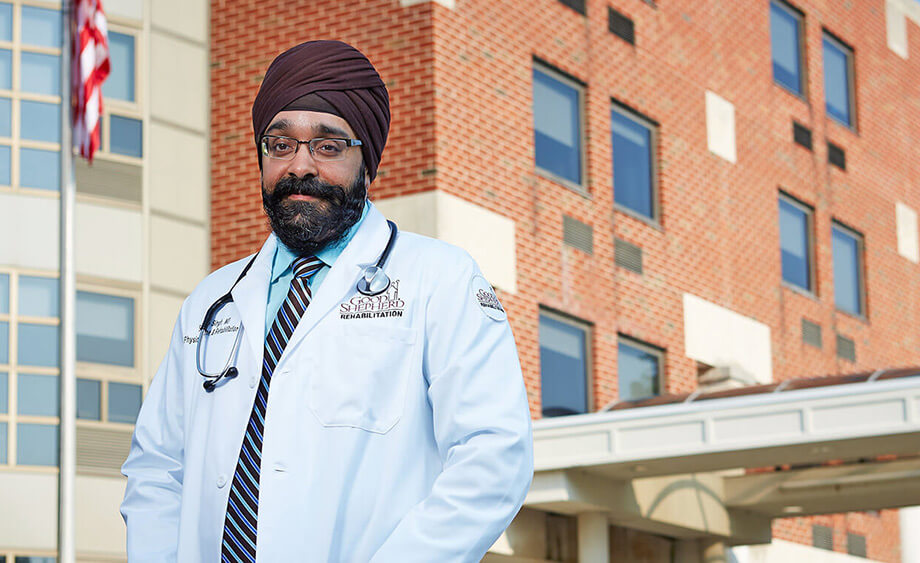
If you or a loved one has had rehabilitation after a stroke, spinal cord or brain injury, chances are you are familiar with the specialty of physical medicine and rehabilitation (PM&R), also known as physiatry.
Officially established as a specialty in 1947 by the American Board of Medical Specialties, physiatry came to the forefront during the first and second World Wars, when soldiers returned home with serious injuries.
Today, there are more than 6,700 physiatrists in the United States, but unfortunately, many people are not aware of what physiatrists do and the numerous ways they can help patients.
Simply put, physiatrists help people of all ages regain and/or maximize function they have lost due to an accident, illness or injury. Their holistic approach considers the whole person – not just their symptoms – and uses non-surgical treatments as well as certain interventional procedures to further recovery.
Physiatrists practice in inpatient and outpatient settings. At acute hospitals, physiatrists perform in-depth patient histories, diagnose, treat injuries and conditions, direct the treatment team and care for individuals who need continued therapy. Their comprehensive patient histories include the patient’s previous function, lifestyle, living arrangements and any assistance they needed to perform activities of daily living (ADL’s) before their hospitalization.
To better understand what physiastrists do, consider the following patient that suffered a stroke:
- After the patient’s hospital stay, he was unable to walk, speak or swallow easily, or perform his own ADL’s.
- He spent 20 days at a specialized rehabilitation hospital where a PM&R physician coordinated physical, occupational and speech therapy, neuropsychology and nursing care to restore as much function as possible.
- The physiatrist also provided pain management, medications to enhance motor recovery and education to prevent future strokes.
- Two main goals for this patient were to be able to walk and work on jigsaw puzzles with his grandchildren.
- Several months after the stroke, the patient could walk with a cane and perform daily activities independently.
- He and his grandson also just completed a 500 piece jigsaw puzzle!
In rehabilitation hospitals such as Good Shepherd, physiatrists direct professional teams who understand that the patient’s recuperation involves every aspect of his/her life. They focus on personalized treatment for patients who have lost the ability to walk, move or talk because of a disease, disorder or injury. Every patient has different goals, and treatment strives to get patients as close to their normal level of function as possible and to maximize quality of life and decrease caregiver burden for those not able to regain full function.
In outpatient settings, physiatrists perform diagnostic tests for nerve and muscle damage; treat non-healing wounds, pain syndromes and other disabling conditions. For example, patients may be referred to a physiatrist for an evaluation if they have lost function from a neurological disease or experience worsening of a chronic illness and/or pain that prevents them from performing daily activities. The physiatrist will determine treatment to help the patient return to the best possible level of function.
If you or a loved one want to stay active and enjoy life to the fullest despite disability, disease or injury, consider a consultation with a physiatrist to learn more about how he or she can help you on the road to recovery.
For more information on how a physiatrist can help you, call Good Shepherd Rehabilitation at 1-888-44-REHAB (73422).
